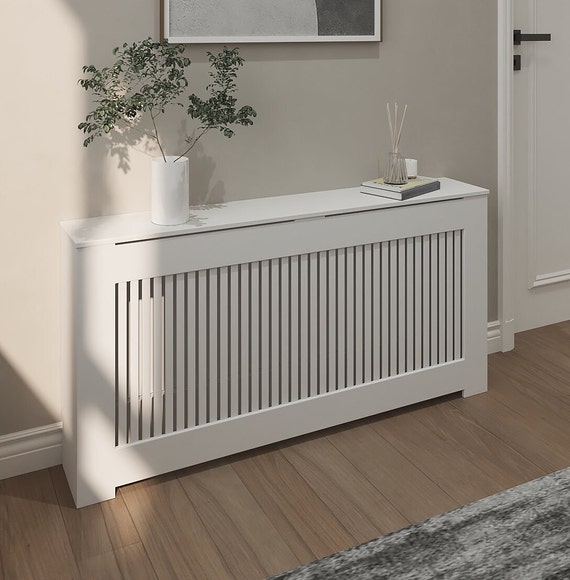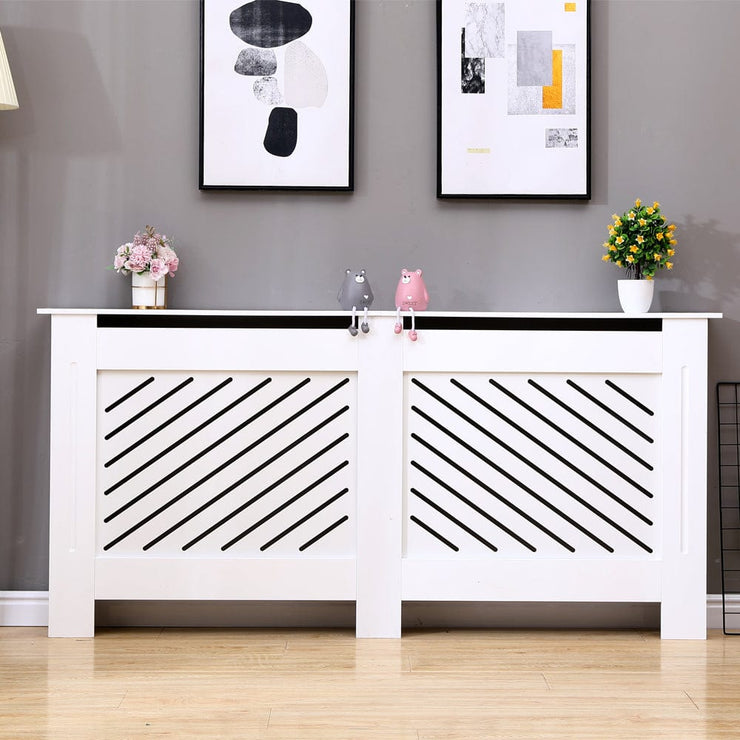Change Your Area with a Sophisticated Radiator Cover
Change Your Area with a Sophisticated Radiator Cover
Blog Article
Radiator Covers: Comprehending Materials, Designs, and Benefits
Radiator covers offer both useful and aesthetic functions within a home, using a range of materials such as wood, metal, and MDF to match various layout preferences. Picking the ideal radiator cover entails comprehending the subtleties of materials, styles, and their linked benefits.
Sorts Of Products


Wooden covers, commonly crafted from hardwoods such as oak or maple, give a timeless, warm look that complements traditional interiors. Their durability and capability to be tarnished or repainted add to their flexibility. Metal covers, usually made from steel or light weight aluminum, are preferred for their robustness and contemporary look, typically including sleek lines that improve modern rooms.
MDF, a manufactured wood product, is preferred for its cost-effectiveness and convenience of customization. It can be painted or completed to match existing style while offering a smooth surface. Plastic covers, while less typical, are immune and light-weight to moisture, making them suitable for humid atmospheres.
Inevitably, the selection of product for a radiator cover should align with the house owner's design choices, useful requirements, and the specific environment where the cover will be set up. Each product offers an unique character, making sure that there is an alternative to match every taste and setting.
Popular Layout Styles
Stressing visual appeal, prominent layout styles for radiator covers mirror a variety of preferences and interior decoration fads. Conventional styles usually include intricate woodwork and elaborate describing, making them ideal for vintage-inspired or classic interiors. These covers normally include sculpted components, giving a warm and inviting feel to any space.
In comparison, contemporary designs concentrate on minimal visual appeals, defined by tidy lines and downplayed sophistication. Products such as metal or sleek timber with a smooth coating are generally made use of, permitting these covers to mix perfectly into modern rooms. Industrial designs, on the other hand, welcome raw products like subjected metal and concrete, including a strong statement to loft space or city settings.
For those seeking a special touch, bespoke designs supply customization choices that satisfy private choices, enabling home owners to select colors, patterns, and products that complement their design. In addition, farmhouse-style covers integrate rustic aspects, including troubled wood and basic forms that evoke a relaxing, nation charm.
Benefits of Radiator Covers
Radiator covers not just boost the aesthetic charm of an area but likewise use numerous practical benefits that make them a rewarding enhancement to any home. Among the key advantages is security, particularly in homes with kids or pets. Covers decrease the danger of burns from warm radiator surface areas, ensuring a much safer setting.
Additionally, radiator covers can boost energy effectiveness. By routing warmth right into the space as opposed to enabling it to escape, they assist maintain a regular temperature, reducing heating prices with time. This is especially beneficial in older homes where radiator systems may be less effective.
An additional significant advantage is noise reduction. Radiators can in some cases create unwanted sounds during procedure, and covers can aid stifle these noises, contributing to a more tranquil space. Radiator covers can be useful, supplying extra storage or display room, therefore making best use of the energy of often-overlooked areas.
Lastly, they can protect radiators from dirt and debris, which can hinder performance and boost maintenance needs. With these incorporated advantages, radiator covers become a practical remedy for boosting both the performance and style of any kind of home atmosphere.
Installation Factors To Consider
Setting up radiator covers requires mindful factor to consider to ensure both functionality and safety (Radiator cover). Initially, examine the dimensions of your radiator click reference and the surrounding room to make sure an appropriate fit. Exact measurements are crucial; an uncomfortable cover can obstruct heat circulation or produce safety hazards
Next, evaluate the product of the cover. While wood supplies aesthetic appeal, metal options might supply better sturdiness and heat resistance. Take into consideration the weight of the cover as well; larger covers may call for additional support or supports to avoid sagging or damages over time.
Air flow is another vital facet. Covers must feature appropriate air movement to avoid overheating and keep reliable heating. Search for styles with slats or openings that permit heat to circulate without obstruction.
Furthermore, make certain that the cover is securely mounted to stop crashes, specifically in homes with children or animals. Radiator cover. It's recommended to comply look these up with the producer's setup standards carefully and, if needed, get in touch with a specialist for intricate installments
Upkeep and Treatment Tips
Appropriate upkeep of radiator covers is important for ensuring their longevity and ideal performance. Regular cleaning is important; dust and debris can accumulate, blocking air movement and minimizing warm effectiveness. Make use of a soft, wet towel or a microfiber duster to carefully wipe the surface, avoiding rough chemicals that might harm the surface. For painted or timber covers, take into consideration an appropriate polish or safety finish to preserve their appearance.
Evaluate the covers regularly for indicators of wear or damages, such as splits or peeling paint. Addressing these problems quickly can prevent further deterioration. Make certain that the covers are safely attached and inspect for any loosened screws or fittings, as resonances from the radiator can loosen them in time.
In cooler months, avoid positioning heavy things or decorative things on top of the radiator covers, as this can restrain heat circulation and cause unnecessary stress and anxiety to the structure. Last but not least, consider seasonal upkeep by removing the covers for complete cleaning and assessment throughout warmer months when the heating unit is inactive. Taking on these simple care pointers will certainly enhance the efficiency and visual appeal of your radiator covers, ensuring they offer their purpose successfully for several years to come.

Conclusion
In recap, radiator covers serve as visual and functional enhancements to household spaces. Cautious factor to consider of installation and maintenance additional ensures the durability and efficiency of radiator covers in any kind of home environment.
Radiator covers serve both visual and functional functions within a home, using an array of products such as hardwood, metal, and MDF to fit numerous design preferences. Choosing the ideal radiator cover entails recognizing the subtleties of products, designs, and their associated benefits.Highlighting visual appeal, popular style styles for radiator covers mirror an array of try this out preferences and indoor design patterns.Radiator covers not only improve the visual allure of an area yet additionally offer several practical advantages that make them a worthwhile addition to any home. Think about the weight of the cover as well; much heavier covers may require additional support or supports to stay clear of drooping or damages over time.
Report this page